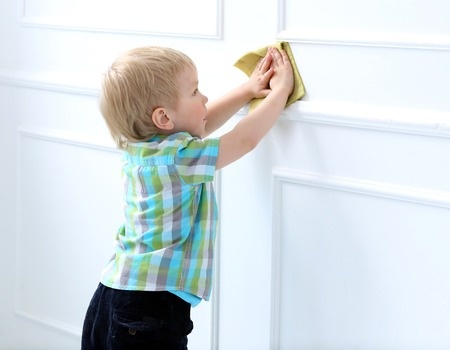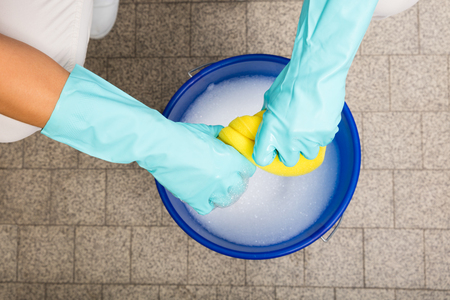- Clean Home
- Clean
- Tips For Cleaning Walls
Tips For Cleaning Walls
Tips for cleaning walls. Your walls may not look like they need a good bath. After all, dust and soot fall to the floor, right?
Much of it does, but just enough clings to vertical surfaces to warrant a monthly bath, especially for those walls around and behind the toilet.
You can easily clean interior walls without removing paint - and the solution is mild enough so that even your toddlers can pitch in on this chore.
You'll want to start by removing the dust that has settled there, using a hand-duster or a vacuum cleaner with an extension tool on a low setting. This will help keep dust from turning to mud when you begin cleaning walls.
Tips For Cleaning Walls That Are Painted
To clean walls the right way, you'll need two buckets, a sponge, and a sponge mop for washing walls.
You'll use the sponge mop to clean walls above head height and the sponge for cleaning the lower areas. Use one bucket for the cleaning solution; the second for wringing out your sponge and sponge mop.
You may also want to lay down old sheets or canvas drop cloths to protect your floors from cleaning solution drips.
Tips For Cleaning Walls Around the Toilet
To sanitize the walls around and behind the toilet:
1. Dip your sponge in the bucket of sappy water, wring it slightly (so it isn't dripping), and start sponging the walls clean, working your way around from top to bottom.
2. Rinse the Sponge. Dunk into your fresh-water bucket as needed between wipes. Don't forget to wring the sponge out a bit to avoid drips. Then end with one final pass with fresh water to rinse the solution from your walls.
3. Dry thoroughly. The microfiber cloth makes this easy work. It's essential to chase away any last bits of moisture to avoid a setting that invites bacteria.
DIY Solution for Cleaning Walls
In the first bucket, mix the solution you'll use to clean walls - a gallon of warm water and several squirts of hand dishwashing detergent and fill a second bucket with warm water.
Start by dusting (or vacuuming) walls to remove adhered-on dirt and soot.
Dip the sponge in the cleaning solution, and tackle the wall in 3-foot sections using vertical strokes from left to right and top to bottom.
Follow by wiping the area clean with the sponge dipped in clear water. Finish by drying the surface and woodwork with a clean cloth.
- Clean Home
- Clean
- Tips For Cleaning Walls









